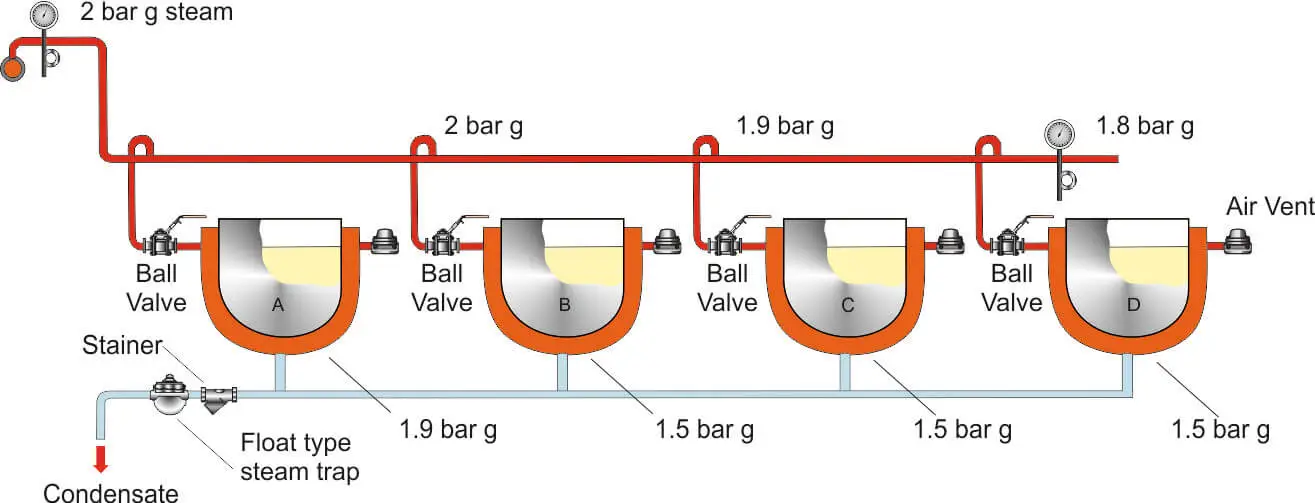Avoid group steam trapping at the process equipment level
Group steam trapping of batch equipment at the process level, operating at different pressures should be converted to individual steam trapping. Individual trapping lowers process time and reduces steam consumption.
Group steam trapping involves the use of a single trap for more than one application. Often, grouping batch equipment that operate at the same pressure is considered a feasible option. However, in this case, though the equipment operate at the same pressure, a difference exists in their time v/s temperature profiles.
Thus (referring to the diagram below) if equipment A has almost reached the desired temperature it will condense less steam as compared to similar equipment (B, C, D) in the group that have just begun to attain their temperature. So the pressure drop across B, C, and D would be higher. The steam passing through A would flow along the condensate drain line to equalise the pressure at the outlets, in the process impeding condensate evacuation from B, C, and D. Also, the steam trap sensing steam (from A) remains closed, further hampering evacuation.

Inadequate condensate removal at the process equipment level leads to higher heating times and thus higher steam consumption. It is recommended to provide individual steam trapping for process equipment to ensure higher process efficiency with reduced steam consumption.
